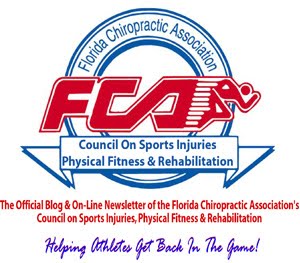From professional athletes to weekend warriors, the condition known as “runner’s knee” is a painful and potentially debilitating injury suffered by millions of people - although until now, it has been unclear just what causes it. 
But new research from the University of North Carolina at Chapel Hill has zeroed in on what appear to be the main culprits of the condition, formally known as patellofemoral pain syndrome.
The study is believed to be the first large, long-term project to track athletes from before they developed runner’s knee, said study co-author Darin Padua, Ph.D., associate professor of
exercise and sport science in the UNC College of Arts and Sciences.
“Earlier studies have usually looked at people after the problem sets in,” Padua said. “That means that while previous research has identified possible
risk factors related to strength and biomechanics, it’s been unclear whether those caused the injury, or whether people’s muscles and the way they moved changed in response to their injury.”
The research appears in the November issue of the American Journal of Sports Medicine.
Runner’s knee - the bane of many types of exercise, from running to basketball to dance - affects one in four physically active people. If unchecked, it can lead to more serious problems such as patellofemoral osteoarthristis.
“Patellofemoral pain syndrome can be devastating,” said Padua. “The pain can severely curtail a person’s ability to exercise and the symptoms commonly reoccur. That said, athletes often have a high pain threshold and may ignore it. But if they do, their cartilage may break down - and if that gets to the point of bone on bone contact, nothing can be done to replace the damaged cartilage.”
Padua and his colleagues studied almost 1,600 midshipmen from the United States Naval Academy. Researchers analyzed participants’ biomechanics when they first enrolled at the academy, then followed them for several years to see if they developed patellofemoral pain syndrome.
A total of 40 participants (24 women and 16 men) developed the syndrome during the follow-up period. The study found:
• Participants with weaker hamstring muscles were 2.9 times more likely to develop the syndrome that those with the strongest hamstrings
• Those with weaker quadriceps muscles were 5.5 times more likely
• Those with a larger navicular drop (a measure of arch flattening when
bearing weight) were 3.4 times more likely
• Participants with smaller knee flexion angle (those whose knees bent less
on landing during a jump test) were 3.1 times more likely
Padua said the pain associated with the condition could be explained by those different factors coming together to create a focal point of pressure between the kneecap and the underlying bone.
“Overall, these people generally have weaker quads and hamstrings. As a result, they don’t bend their knees as much when doing task, such as running or jumping. That means the contact area between the kneecap and the femur is smaller, so pressure is focused and pinpointed on a smaller area.
“Also, the more a person’s arch falls when bearing weight, the more their whole leg may rotate inwards. That will mean their kneecap won’t track properly, leading to yet more pressure and more potential pain.”
Padua said the good news is that the study appears to confirm that if people can change the way they move and improve their leg strength, they can prevent or correct the problem.
Everyday athletes can also spot for themselves whether they are at risk: if their knee crosses over the big toe when squatting; the arches of their feet collapse when landing from a jump; and if they do not bend their knees much when they land, they stand a greater chance of developing the syndrome, Padua said.
Provided by University of North Carolina at Chapel Hill

 20
20 






